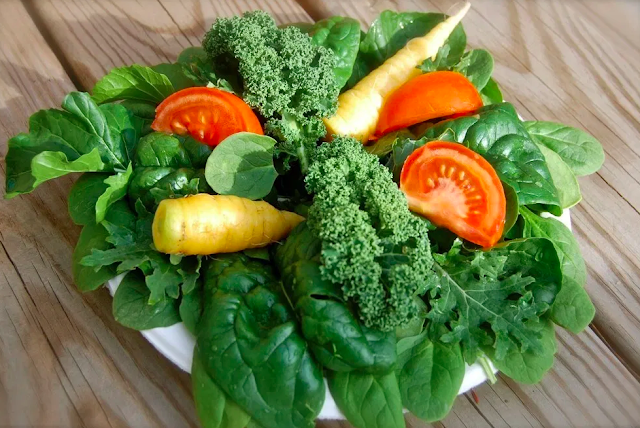Tofu
- Tofu-Veggie Lasagna This dish is something that I think about as I fall asleep at night. It's a garden vegetable lasagna. When my daughters were first born, the hospital sent us home with a dinner basket of a frozen vegetable lasagna and a bottle of sparkling apple cider. It wasn't long before I felt compelled to replicate the lasagna, adding my own twist to the dish. The greens can be frozen spinach or garden (or market) spinach, kale, chard, beet greens, collards, or broccoli. I also like to add about a half of a large carrot grated. I'm lactose intolerant, so I can't have a lot of soft or fresh cheese at any one time. That led me to try tofu as the "cheese" filling, sometimes all tofu, sometimes blended with part cottage cheese. So, I mash 16 oz of firm tofu and season with lemon juice, salt, and garlic. I then add the chopped veggies and stir together. I don't use any meat in this lasagna. Instead, I layer lasagna noodles with the tofu-veggie filling and a marinara sauce. I top the entire casserole with a mixture of grated mozzarella and Parmesan cheese. This makes a 9 X 13-inch baker of lasagna with about 140 grams of protein total and 8 servings, with about 17.5 grams protein per serving.
- Chocolate-Tofu Silk This is not a meal, but a high-protein end to a meal, with about 7.5 grams of protein in a serving (if dividing the recipe into eighths).
- TLT Sandwich Using strips of fried tofu, layer tofu, lettuce, and tomato on whole grain bread, like a BLT only subbing in the fried tofu for the bacon. One-sixth of a 1-lb block of firm tofu, cut into slices and fried has roughly the same amount of grams of protein as 2 regular slices of pork bacon, about 6.5 grams. Two slices of whole wheat bread adds 7 grams of protein, for a sandwich with about 14 grams protein.
Lentils
- Sloppy Lentils on Buns I make a Sloppy Joe filling with tomato sauce, green peppers, onions, garlic, chili powder, mustard powder, beef bouillon, salt, pepper, and bit of cornstarch, plus about 1 1/2 cups of cooked lentils and 1/2 cup of cooked barley for 4 people. Serve on large burger buns. Each sandwich contains about 17 grams of protein.
- Lentil-Barley Marinated Salad I toss together cooked lentils and cooked barley (in about a 2:1 ration lentils to barley), with diced celery, minced shallots, and a mustard vinaigrette. Chill for a couple of hours. Grams of protein would depend on serving size.
Garbanzo Beans
- Hummus and Fry Bread Fry bread is a yeast dough, such as French bread dough, that is formed into rounds about 4 to 5 inches in diameter and about 1/2-inch thick. I fry them in a skillet with a little oil to prevent sticking (these are NOT deep-fried). We like the fry bread spread with homemade hummus. I make hummus in the food processor with cooked garbanzo beans, lemon juice, garlic, salt, oregano, parsley, and olive oil.
- Tabouli The tabouli recipe that I follow comes from Jane Brody's Good Food Book. The recipe calls for prepared bulgar wheat, cooked garbanzo beans, olive oil, lemon juice, parsley, garlic, shredded carrot, diced tomatoes, diced cucumber, salt, and pepper. This is a favorite of ours in August, when my garden provides fresh cucumbers, tomatoes, and parsley. It's a dish that is served cold, so this can be made in the cool summer morning hours, refrigerated, and served in the evening -- no heating the kitchen in the late afternoon.
- Vegetarian Chili I make vegetarian chili, using beans, barley or TVP (for "chew"), canned tomatoes, green peppers, the usual seasonings, then top with shredded cheddar cheese and fried/baked corn tortilla strips. It's very good, even without meat. The barley or TVP provide that chewy sensation that would otherwise come from ground beef.
- Vegan Shepherd's Pie The "meat" in this shepherd's pie can be a vegan meat substitute, rehydrated TVP, or cooked beans. I like to use about half TVP/half cooked beans or lentils. We think this is quite delicious and don't miss the meat at all.
- Bean Tacos/Tostadas filled with black beans or refried pintos, marinated corn (in a lime vinaigrette), avocado, tomatoes, bell pepper, shredded cheese, and drizzled with plain yogurt.
- Bean and Cheese Quesadillas whole grain flour tortilla spread with refried pinto beans and shredded cheese, topped with second tortilla and toasted on a griddle.
- Kitchen Sink Burritos flour tortilla filled with beans, rice, avocado, cheese, yogurt/sour cream, salsa, tomatoes, olives
- Pasta Primavera made with spaghetti noodles, an assortment of sautéed vegetables (tomatoes, peppers, eggplant, asparagus, green beans, carrots, onions, garlic), black olives, Greek olives or capers, cooked cannellini beans, Parmesan cheese, pine nuts or chopped almonds, basil and oregano -- all tossed together.
- TVP Spaghetti
- TVP (or lentil) Cabbage Patch Soup
- Egg Foo Yung
- Garden Vegetable and Cheese Frittata
- Garden Vegetable and Cheese Quiche
- Skillet Huevos Rancheros with corn tortillas, black beans, eggs, chopped tomatoes, onions, garlic, seasonings, olive oil, avocado, fresh cilantro, lime wedges, cheese, hot sauce, and any extra veggies (such as zucchini or bell peppers).
- Peanut Noodles using whole grain pasta, peanut butter, red pepper flakes, garlic, soy sauce, ginger, lime juice, and cilantro, topped with chopped peanuts.
- Live and Learn's Curried Pumpkin-Peanut Soup topped with whole grain croutons.
- "Salisbury Fake" This is a faux ground beef patty smothered in brown gravy.
- Wheat Meat Breakfast Sausage Again, a high-gluten meat substitute, seasoned and formed into sausage patties.
Okay, so those are my family's favorites. What are your family's favorite meatless meals?

